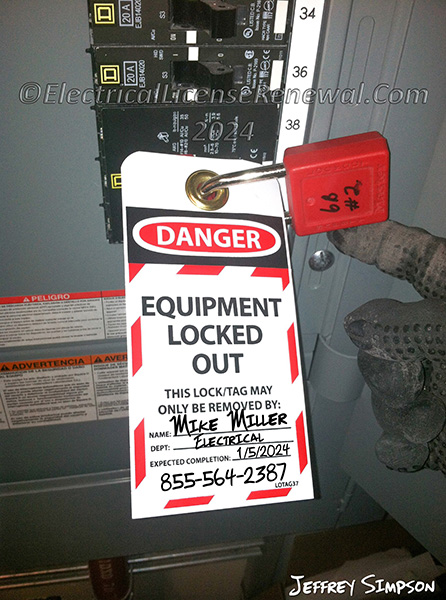NFPA 70E 120.4(A)(4) Simple Lockout/Tagout Procedure.

According to NFPA 70E Section 120.2(H), two forms of hazardous electrical energy control are permitted:
- The simple lockout/tagout procedure, OR
- The complex lockout/tagout procedure
For the simple lockout/tagout, a written lockout/tagout plan is not required and there is never more than one source of electrical energy. The qualified person performing the work is in charge and is responsible for their own lockout/tagout.
A complex lockout/tagout usually involves more than one source of energy and often involves more than one single disconnecting means. For the complex lockout/tagout, the person in charge shall have responsibility of the overall project and a written plan prepared before each lockout/tagout application.
Below is a sample of NFPA 70E. For the complete section, see the actual NFPA 70E text at NFPA.ORG. Once there, click on the free access link to NFPA 70E.
120.4(A)(4) Simple Lockout/Tagout Procedure. All lockout/tagout procedures that involve only a qualified person(s) deenergizing one set of conductors or circuit part source for the sole purpose of safeguarding employees from exposure to electrical hazards shall be considered to be a simple lockout/ tagout. Simple lockout/tagout procedures shall not be required to be written for each application. Each worker shall be responsible for his or her own lockout/tagout.
Exception: Lockout/tagout is not required for work on cord- and plug connected equipment for which exposure to the hazards of unexpected energization of the equipment is controlled by the unplugging of the equipment from the energy source, provided that the plug is under the exclusive control of the employee performing the servicing and maintenance for the duration of the work.